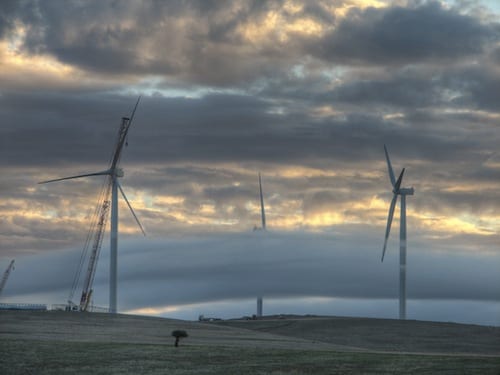A project that will test whether South Australia’s excess solar and wind power can be used to produce cheap hydrogen, both as a means to supplement Australia’s gas supply, and as a long-term energy storage option, has been backed by the Australian Renewable Energy Agency.
ARENA said on Tuesday that it had put $5 million in grant funding towards the development of a pilot “power-to-gas” plant to be installed at the Australian Gas Network’s Adelaide depot, designed by Wollongong based company AquaHydrex.
The technology at the centre of the trial – the result of years of collaborative research at the University of Wollongong and Monash University – will use renewable energy to power ultra-efficient and low cost electrolysis, splitting water molecules into hydrogen and oxygen.
The resulting hydrogen will then be injected into the South Australian gas grid in partnership with AGN, supplementing – and decarbonising – the existing natural gas supply.
“It turns out you can inject hydrogen into the gas main up to at least 10 per cent of the total gas in there, perhaps quite a bit higher without any modification,” ARENA chief Ivor Frischknecht said.
In this way, the Australian-first trial is also hoped to result in a form of long-term energy storage that will complement other forms, like batteries and pumped hydro.
“In the future we’re going to have a lot of excess renewable energy on very windy days, on very sunny days, and we’re looking for useful things to do with that energy,” Frischknecht said.
“You can easily store the hydrogen for days, weeks or even months and then run it through a gas peaking plant or use it to supply other types of services like heating hot water.
“A battery is really only good for seconds to hours of storage at very most, and pumped hydro you might be looking at hours through to days.”
In a seperate statement on Wednesday, energy minister Josh Frydenberg said the project was “a leap forward,” and away from existing methods of producing hydrogen that relied on fossil fuel derived electricity and other expensive materials.
“This new technology will harness renewable energy and utilise ultra-efficient and low cost electrolysis to produce hydrogen, providing a scalable and affordable energy storage option that integrates with our national gas infrastructure,” the a statement said.
“By supporting innovative new solutions like this the Turnbull Government’s investment in this trial will help deliver an affordable and reliable energy system as we transition to a lower emissions future.”
Of course, as Frischknecht himself has noted, this is not the only trial of its type going on in Australia – or the world – at the moment. As we reported earlier this week, Moreland Council and the Victorian State government have announced that $1 million will be spent to develop a commercial-scale hydrogen refueling station for garbage trucks that will be powered exclusively by renewable energy.
And in June, the South Australian government launched stage one of its Hydrogen Roadmap, providing $8.2 million over four years towards construction of a hydrogen production facility, refuelling station and a trial involving six hydrogen-fuelled buses.
“It’s certainly not a new idea,” Frischknecht said in comments on Tuesday. “The challenge is that it’s expensive. But we’re looking to a future where renewable energy at certain times of the day is going to be free or almost free,” he said.











